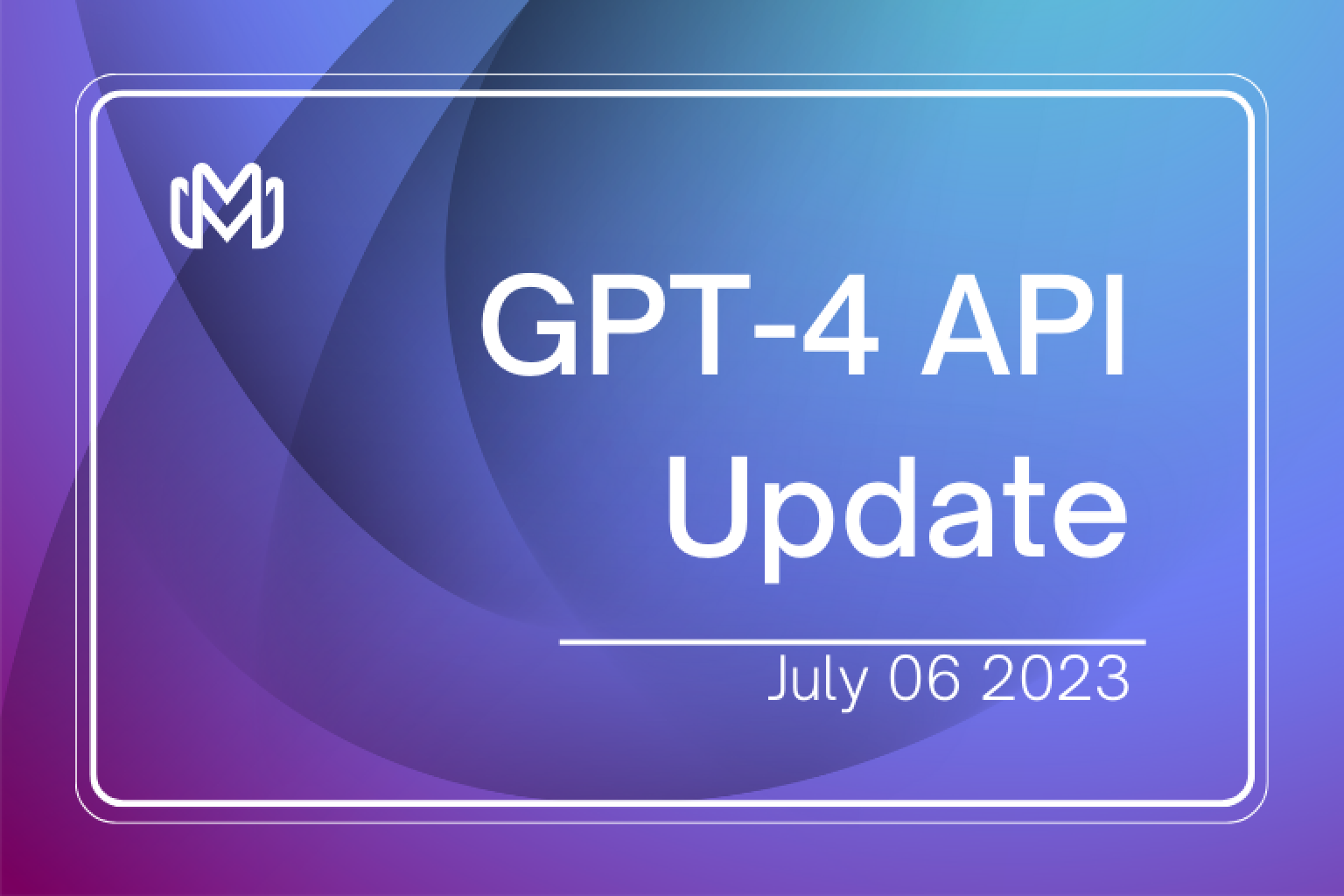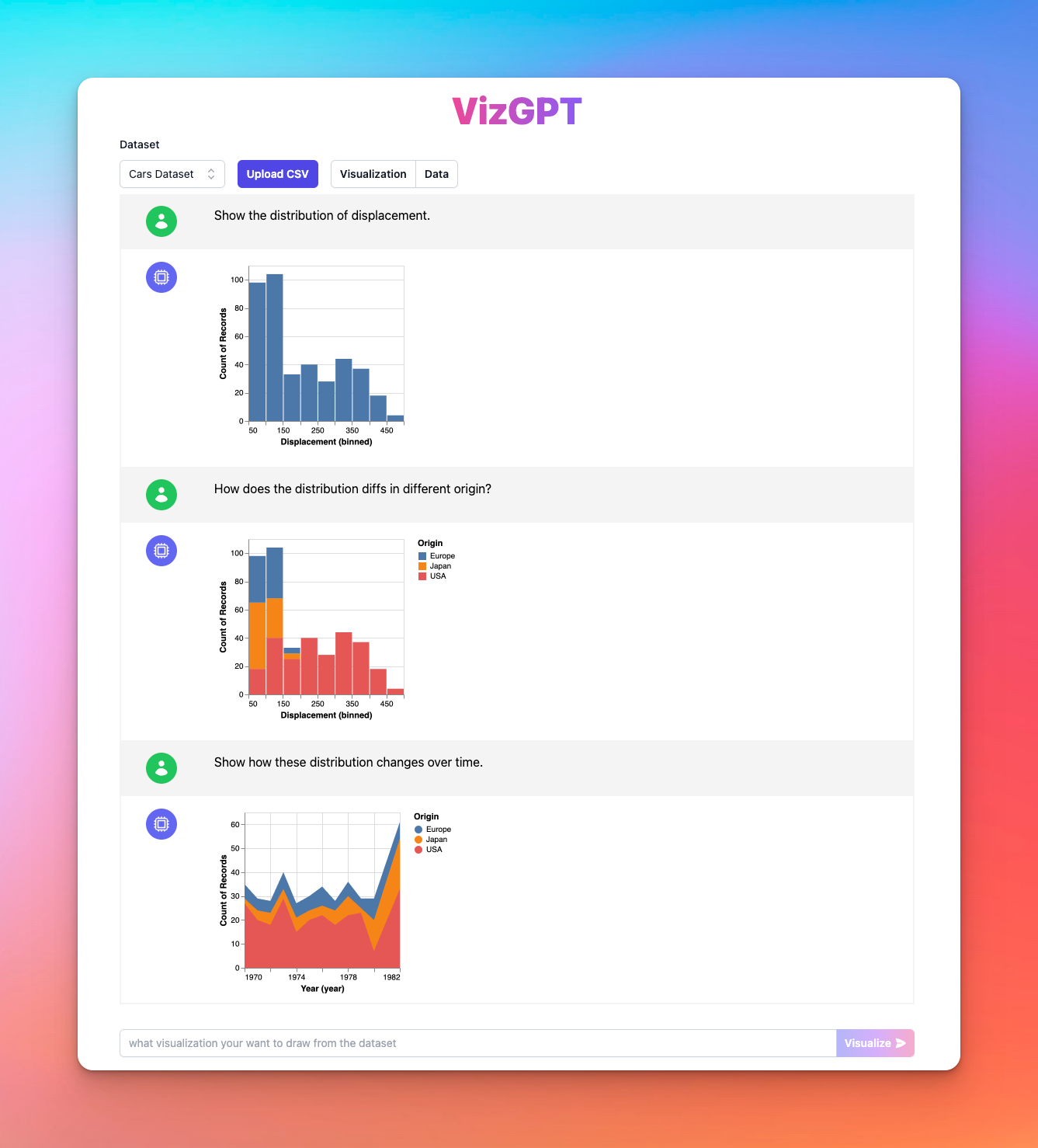OpenAI's Huge Update for GPT-4 API and ChatGPT Code Interpreter
Updated on

In the rapidly evolving world of artificial intelligence, OpenAI has made substantial progress once again.
GPT-4 API is now available to all paying OpenAI API customers. GPT-3.5 Turbo, DALL·E, and Whisper APIs are also now generally available, and we’re announcing a deprecation plan for some of our older models, which will retire beginning of 2024: https://t.co/H11w4IalNZ (opens in a new tab)
— OpenAI (@OpenAI) July 6, 2023
With the general availability of its most potent model, GPT-4 API, and the increasingly prevalent ChatGPT Code Interpreter, OpenAI illustrates its continuous commitment to technology advancement and developers' support. This article dives deep into these pertinent updates, their impact, and what they signify for the future of AI-driven development.
GPT-4 API is Available for the Public
What is GPT-4 API?
GPT-4 API can be defined as OpenAI's most advanced model, designed to enable developers to create innovative products using AI. It stands as a testament to OpenAI's unwavering dedication to technological progression and supplementing developers' arsenals with the best tools possible.
The general availability of GPT-4 API is a significant milestone for all OpenAI API customers. Since its introduction in March, requests for access to this model have soared into the millions, reflecting its sheer potential and desirability. With a successful track record, all existing API developers now have full access to the GPT-4 API with an impressive 8K context.
OpenAI envisages that this revolutionary model will open the floodgates to a barrage of inventive products, broadening the scope and uses of AI technology. Plans are currently in place to extend access to new developers by the end of this month. Once this is achieved, OpenAI will increase rate limits, contingent on compute availability.
Why GPT-4 API is a Big Deal

Let’s talk about recasting traditional AI interactions. Introduced in March, the OpenAI Chat Completions API has rapidly ascended to constitute an overwhelming majority—97%, to be precise—of API GPT usage.
But what makes it so attractive? The structured prompt interface, substituting a freeform text prompt, delivers superior results. Developers enjoy a higher degree of flexibility and specificity, thanks to its powerful handling of various use cases and conversational needs. Plus, robust built-in security mechanisms reduce the risk of prompt injection attacks.
The API's pivotal features include system messages, function calling, and multi-turn conversation capabilities, offering developers a platform to build both interactive experiences and a wide array of completed tasks.
What About the GPT-3.5 Turbo, DALL·E, and Whisper APIs?
Further amplifying OpenAI's product suite, the GPT-3.5 Turbo, DALL·E, and Whisper APIs have now been made generally available. Each of these models showcases distinctive qualities, ready for production-scale use. GPT-3.5 Turbo is designed to handle completion tasks while DALL·E is tailored towards generating images from textual descriptions. On the other hand, Whisper is an automatic speech recognition system trained on multitudes of multilingual and multitask supervised data collected from the web.
In light of the production readiness and robust operation of these APIs, OpenAI is actively working to facilitate fine-tuning for GPT-4 and GPT-3.5 Turbo. The completion of this initiative is expected later this year, opening up a new facet of customization and adaptability for developers.
Fading Out Older Completions API Models
OpenAI has always been about propelling forwards, and the path forward is the Chat Completions API. In a concerted effort to optimize compute capacity and concentrate on this newer API, OpenAI is planning to retire older models using the Completions API in six months.
Starting today, the Completions API will be tagged as "legacy" in OpenAI's developer documentation representing a shift in OpenAI’s focus to prioritize Chat Completions API. This move doesn’t spell the end for the Completions API entirely—it will remain accessible, albeit with a more limited scope and capabilities.
| Older model | New model |
|---|---|
| ada | ada-002 |
| babbage | babbage-002 |
| curie | curie-002 |
| davinci | davinci-002 |
| davinci-instruct-beta | gpt-3.5-turbo-instruct |
| curie-instruct-beta | |
| text-ada-001 | |
| text-babbage-001 | |
| text-curie-001 | |
| text-davinci-001 | |
| text-davinci-002 | |
| text-davinci-003 |
Different models will replace the older completion models come January 4, 2024. For example, stable models for base GPT-3 models will automatically upgrade to newer models, offering developers an easy transition while maintaining the quality of their products. This represents OpenAI’s commitment to their developers, to streamline transitions and minimize disruption as they advance their technology.
The Arrival of Code Interpreter on ChatGPT Plus
The Code Interpreter, which will be available for all ChatGPT Plus users next week, is such a groundbreaking addition that it could redefine the way we work with data. The Code Interpreter enables ChatGPT to execute code and allows users to perform an array of actions like analyzing data, creating charts, editing files, and executing mathematical operations.
Code Interpreter will be available to all ChatGPT Plus users over the next week.It lets ChatGPT run code, optionally with access to files you've uploaded. You can ask ChatGPT to analyze data, create charts, edit files, perform math, etc. Plus users can opt in via settings. pic.twitter.com/IjH5JBqe5B
— OpenAI (@OpenAI) July 6, 2023
Developers can simply opt-in to this revolutionary feature through the settings and stand on the verge of immense potential. This is a significant step forward in addressing both regular and complex data science use cases. The Code Interpreter's primary function is to execute code against data sets, making tasks such as data modeling, visualization, and analysis more straightforward and less time-consuming.
What Can I Do with ChatGPT Code Interpreter?
Let us venture into a real-world scenario of how Code Interpreter can redefine how we approach complex issues.
Consider a social network analysis where a new social network emerges, and existing ones are becoming less appealing due to policy shifts. With the Code Interpreter, a command to model a potential cascading collapse of the existing network and the subsequent migration of users using techniques from a research paper is feasible. Not only can it model the potential scenario, but it can also create a graphical representation of the results.
"Hey, ChatGPT with Code Interpreter, use the techniques in this paper [https://t.co/7EPEKIMVrq (opens in a new tab)] to model a potential cascading collapse of Twitter if a new social network becomes available and existing policies make people leave. Make assumptions. Show results graphically." pic.twitter.com/M2QE0h3Yhi
— Ethan Mollick (@emollick) July 6, 2023
Such substantial versatility and the ability to address complex issues elevate the Code Interpreter as an essential tool for any data science toolkit.
Experience ChatGPT Code Interpreter Now with VizGPT
But what if you are not a paid ChatGPT Plus User? You can try out VizGPT (opens in a new tab) right now!
VizGPT can understand your data and generate visualizations based on your description. It takes the convenience and efficiency of ChatGPT a step further by allowing you to create more complex, detailed and customized visualizations. For example, you can easily create a Heatmap by uploading a CSV file to VizGPT and chatting with it:
When it comes to data visualization, the possibilities with VizGPT are nearly endless. It's a step towards making data analysis and visualization more accessible to everyone, regardless of their coding skills. So why still wait? Try it now here: VizGPT website (opens in a new tab)
Moving Forward: A Conclusion
In the fast-paced, technology-driven world we live in today, innovation is the key to staying ahead. OpenAI's recent announcements concerning the general availability of the GPT-4 API, the continuous growth towards the Chat Completions API, and the revolutionary ChatGPT Code Interpreter, all represent significant strides in AI development.
These advancements pave the way for increased productivity, efficiency, and flexibility among developers and organizations alike. Though change may bring its own set of challenges, OpenAI helps smooth transitions and offers relentless support to its community. Ultimately, the future of AI technology looks bright, filled with endless possibilities, and OpenAI is leading the charge towards it.
FAQ
What is the GPT-4 API?
GPT-4 API is OpenAI's most advanced model designed to allow developers to create various products using AI. Currently, the GPT-4 API is generally available to all OpenAPI's paying customers.
What are GPT-3.5 Turbo, DALL·E, and Whisper APIs?
The GPT-3.5 Turbo, DALL·E, and Whisper APIs are all products of OpenAI. GPT-3.5 Turbo is designed for completion tasks, DALL·E generates images based on textual descriptions, and Whisper is an automatic speech recognition system.
What is the ChatGPT Code Interpreter?
The ChatGPT Code Interpreter is a feature that allows ChatGPT to execute code and perform various actions like data analysis, graph creation, file editing, and mathematical calculations.

